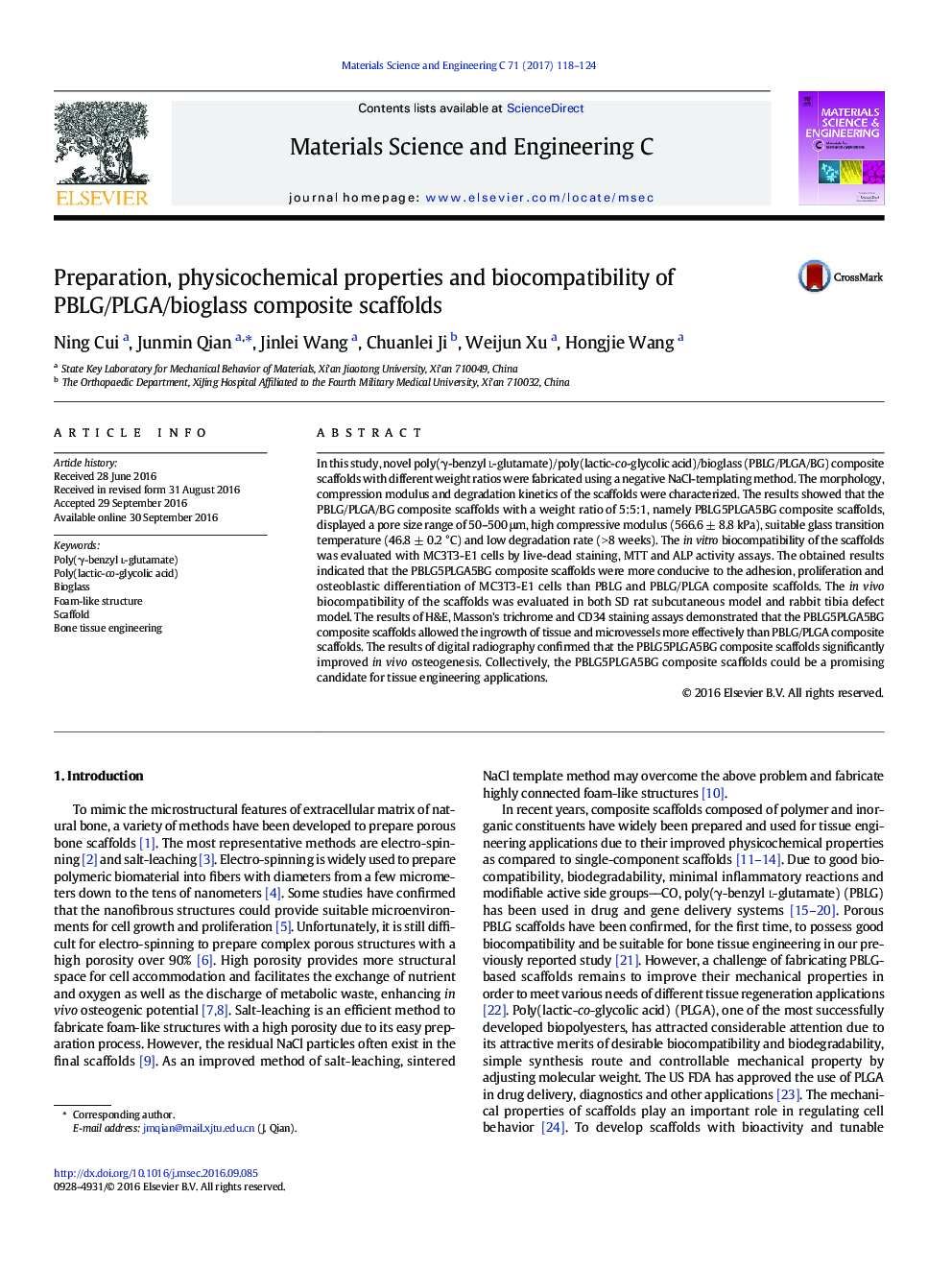| کد مقاله | کد نشریه | سال انتشار | مقاله انگلیسی | نسخه تمام متن |
|---|---|---|---|---|
| 5434613 | 1509150 | 2017 | 7 صفحه PDF | دانلود رایگان |

- Foamy PBLG/PLGA/bioglass composite scaffolds were fabricated by negative templating.
- PBLG/PLGA/bioglass composite scaffolds displayed tunable physicochemical properties.
- PBLG/PLGA/bioglass composite scaffolds had good biocompatibility in vitro and in vivo.
- PBLG/PLGA/bioglass composite scaffolds could promote the healing of bone defects.
In this study, novel poly(γ-benzyl l-glutamate)/poly(lactic-co-glycolic acid)/bioglass (PBLG/PLGA/BG) composite scaffolds with different weight ratios were fabricated using a negative NaCl-templating method. The morphology, compression modulus and degradation kinetics of the scaffolds were characterized. The results showed that the PBLG/PLGA/BG composite scaffolds with a weight ratio of 5:5:1, namely PBLG5PLGA5BG composite scaffolds, displayed a pore size range of 50-500 μm, high compressive modulus (566.6 ± 8.8 kPa), suitable glass transition temperature (46.8 ± 0.2 °C) and low degradation rate (> 8 weeks). The in vitro biocompatibility of the scaffolds was evaluated with MC3T3-E1 cells by live-dead staining, MTT and ALP activity assays. The obtained results indicated that the PBLG5PLGA5BG composite scaffolds were more conducive to the adhesion, proliferation and osteoblastic differentiation of MC3T3-E1 cells than PBLG and PBLG/PLGA composite scaffolds. The in vivo biocompatibility of the scaffolds was evaluated in both SD rat subcutaneous model and rabbit tibia defect model. The results of H&E, Masson's trichrome and CD34 staining assays demonstrated that the PBLG5PLGA5BG composite scaffolds allowed the ingrowth of tissue and microvessels more effectively than PBLG/PLGA composite scaffolds. The results of digital radiography confirmed that the PBLG5PLGA5BG composite scaffolds significantly improved in vivo osteogenesis. Collectively, the PBLG5PLGA5BG composite scaffolds could be a promising candidate for tissue engineering applications.
Journal: Materials Science and Engineering: C - Volume 71, 1 February 2017, Pages 118-124